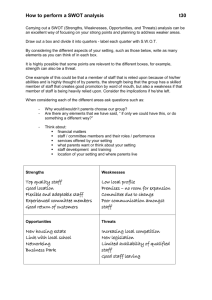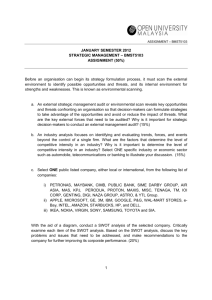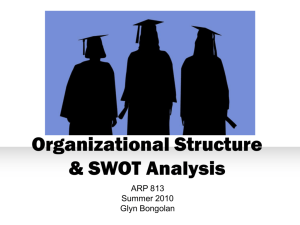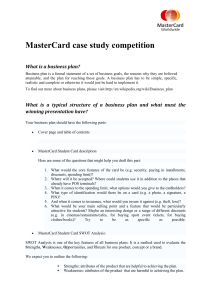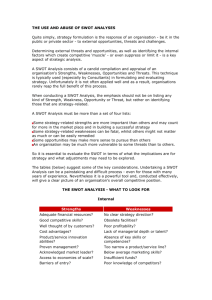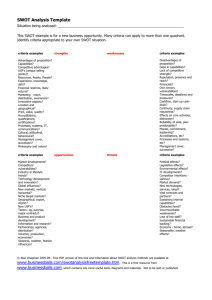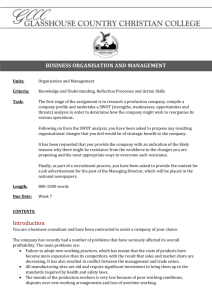City Strategies to Reduce Urban Poverty Through
advertisement
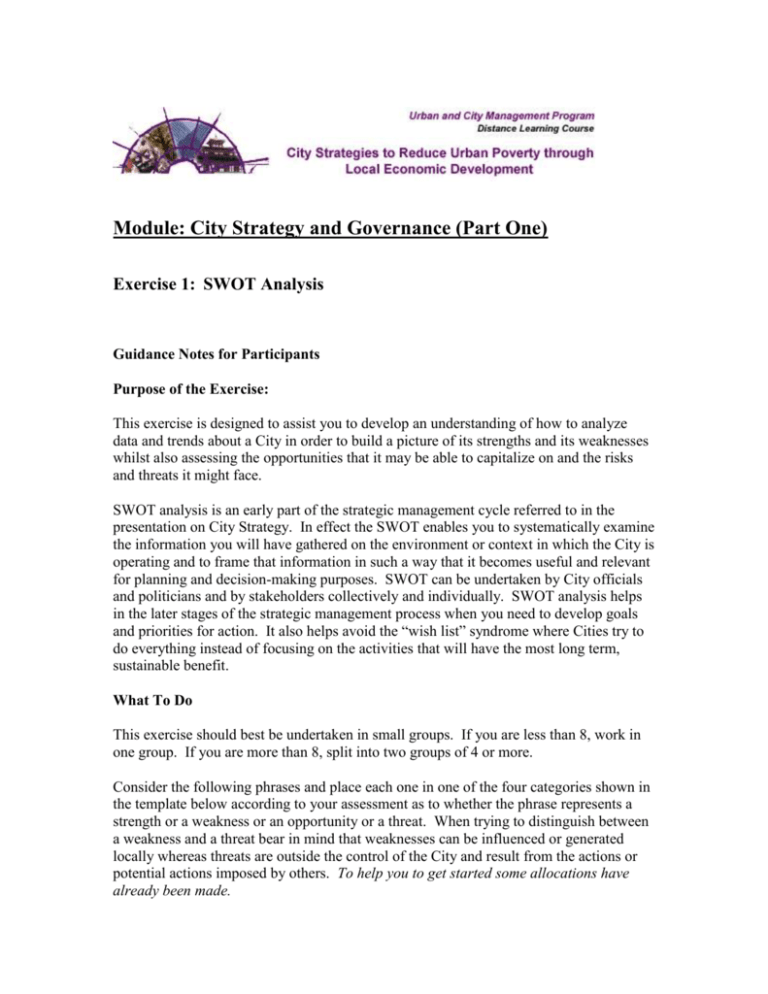
Module: City Strategy and Governance (Part One) Exercise 1: SWOT Analysis Guidance Notes for Participants Purpose of the Exercise: This exercise is designed to assist you to develop an understanding of how to analyze data and trends about a City in order to build a picture of its strengths and its weaknesses whilst also assessing the opportunities that it may be able to capitalize on and the risks and threats it might face. SWOT analysis is an early part of the strategic management cycle referred to in the presentation on City Strategy. In effect the SWOT enables you to systematically examine the information you will have gathered on the environment or context in which the City is operating and to frame that information in such a way that it becomes useful and relevant for planning and decision-making purposes. SWOT can be undertaken by City officials and politicians and by stakeholders collectively and individually. SWOT analysis helps in the later stages of the strategic management process when you need to develop goals and priorities for action. It also helps avoid the “wish list” syndrome where Cities try to do everything instead of focusing on the activities that will have the most long term, sustainable benefit. What To Do This exercise should best be undertaken in small groups. If you are less than 8, work in one group. If you are more than 8, split into two groups of 4 or more. Consider the following phrases and place each one in one of the four categories shown in the template below according to your assessment as to whether the phrase represents a strength or a weakness or an opportunity or a threat. When trying to distinguish between a weakness and a threat bear in mind that weaknesses can be influenced or generated locally whereas threats are outside the control of the City and result from the actions or potential actions imposed by others. To help you to get started some allocations have already been made. When you have completed the exercise discuss the results all together and discuss in particular any differing views as to categorization and also whether the phrases used in the exercise bear any resemblance to the conditions applying in your cities. City is Capital of a well developed region Weak system for monitoring the standard and condition of physical assets Reasonable communication connections – road, rail and water and technology Majority of new small businesses fail within the first two years The economy is diversified Annual flooding brings the City to a standstill Severe ambient and indoor air quality problems Good quality educational establishments including a university City Master Plan being prepared Several pockets of concentrated small-scale service industries spread across the city Extensive home-based production activities The local government is too bureaucratic and not business friendly Educational training biased to two sectors - engineering and government administration The economy is competitive – with some exports Road conditions are deteriorating Central Government has recently agreed to a World Bank loan of US$300m that will make a special Fund available for local governments to borrow money for investment in municipal services for the poor and economic development activities. 30% of the City population lives in informal settlements because of lack of adequate housing and land titles. High prevalence of street vending Utilities are inadequate and need significant investment to improve Grants are available for new business development from national government subject to matching funding from the local government High levels of pollution due to traffic congestion and lack of sewerage treatment Non-existent micro finance/credit opportunities Ineffective vocational training/education Economic Development has political support and stakeholder involvement Backlog of investment in roads maintenance by national government Entrepreneurship evident in the labor force Successful port The local government is insolvent Potential apparent for developing clusters of businesses Poverty and inequality prevalent – polarization of rich and poor 35% of population do not meet minimum literacy standards recently set by Central Government Regional collaboration with other local governments and stakeholder organizations appears possible A labor force is available There is a backlog of investment in the pipes and drains of basic services that serve poor communities Local government lacks information about the structure of the local economy and the sectors that are generating the most wealth High levels of immigration from the rural areas One large international manufacturer is interested in locating in the area Increasing competition coming from neighboring towns in the Region STRENGTHS WEAKNESSES City is Capital of a well developed region 30% of the City population lives in informal settlements because of lack of adequate housing and land titles. OPPORTUNITIES THREATS One large international manufacturer is interested in locating in the area Annual flooding brings the City to a standstill This exercise has been produced by Angela Griffin, Urban Specialist in the Infrastructure and Energy Unit of the European and Central Asia Region of the World Bank.



